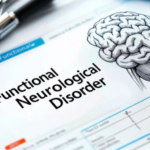Back pain is one of the most common musculoskeletal issues that individuals experience, with causes ranging from simple muscle strain to more complex conditions like herniated discs, spinal stenosis, or tumors. Red flags and yellow flags play a crucial role in guiding healthcare providers to identify serious underlying conditions and the psychosocial factors that could influence recovery.
- Red Flags in back pain indicate serious, potentially life-threatening conditions that require immediate medical attention, such as spinal infections, fractures, malignancies, or neurological compromise. Timely identification and intervention are critical to preventing severe complications, including paralysis or systemic infection.
- Yellow Flags are psychosocial factors that could influence the patient’s pain experience, recovery, and overall prognosis. These include emotional distress, beliefs about pain and disability, fear-avoidance behaviors, or previous pain-related experiences. Early identification of yellow flags can lead to appropriate psychological or behavioral interventions, potentially improving outcomes and reducing the risk of chronic pain.
Importance of Red and Yellow Flags in Back Pain
- Red Flags: Promptly identifying red flags helps differentiate between benign back pain caused by muscle strain or posture issues and more severe, potentially debilitating conditions. Conditions like fractures, infections, or tumors can cause irreversible damage if not addressed quickly.
- Yellow Flags: Identifying yellow flags allows clinicians to address psychological and behavioral barriers to recovery, which can reduce the likelihood of chronic pain. These factors, such as fear of movement or catastrophizing, often contribute to longer recovery times and poor rehabilitation outcomes.
Differential Diagnosis of Back Pain with Red and Yellow Flags
| Red Flags | Yellow Flags |
|---|---|
| Spinal Fractures | Psychological Factors |
| – Recent trauma, fall, or significant force (e.g., motor vehicle accident) with severe localized pain. | – Fear-Avoidance Beliefs (fear of movement or injury exacerbating pain) |
| – History of osteoporosis, corticosteroid use, or advanced age (increased fracture risk). | – Catastrophizing (belief that pain is overwhelming and insurmountable) |
| Infection | – Depression or Anxiety |
| – Fever, chills, or unexplained weight loss. | – Anxiety about movement, disability, or return to work. |
| – Back pain with signs of systemic infection (e.g., discitis, osteomyelitis). | – Feeling of helplessness or hopelessness related to pain. |
| Cancer (Malignancy) | Unrealistic Expectations |
| – Unexplained weight loss, night pain, or history of cancer. | – Expectation of immediate, complete recovery. |
| – Pain that does not improve with conservative treatments or worsens progressively. | – Over-reliance on passive treatments like medications or injections. |
| Cauda Equina Syndrome | Poor Coping Strategies |
| – Severe lower back pain with loss of bladder/bowel control, saddle anesthesia, and/or lower limb weakness. | – Difficulty in managing pain emotionally, resorting to negative coping mechanisms (e.g., avoiding activity). |
| Spinal Stenosis or Discs Herniation with Neurological Deficits | Social or Occupational Factors |
| – Sudden, severe pain with numbness, tingling, or weakness in the legs. | – High work-related stress or family issues affecting recovery. |
| – Progressive neurological signs, such as leg weakness, or difficulty walking. | – Limited social support or unhealthy social dynamics hindering rehabilitation. |
| Aortic Aneurysm | Chronic Pain and Disability |
| – Sudden severe pain, often in the lower back, with signs of vascular compromise. | – Pain persisting for more than 3 months or increasing disability. |
| – Palpable pulsatile mass, signs of shock (hypotension, dizziness). | – Perception of pain out of proportion to the clinical findings. |
| Inflammatory Disease (e.g., Ankylosing Spondylitis) | History of Abuse |
| – Morning stiffness lasting longer than 30 minutes, improvement with movement. | – History of physical or emotional abuse affecting rehabilitation. |
| – Pain relieved by exercise, associated with other systemic symptoms. |
Literature Review and References
- Red Flags in Back Pain:
- Lurie, J. D., et al. (2021). “Evaluation of Red Flags in Low Back Pain: A Clinical Review.” The Journal of the American Medical Association, 325(12), 1157–1167. doi:10.1001/jama.2021.0437. This review emphasizes the importance of identifying red flags such as fractures, infections, and malignancy, and provides guidance on the appropriate use of imaging and further evaluation in these cases.
- Goh, S. L., & Ho, Y. H. (2020). “Red Flags in Low Back Pain: A Review of Clinical Indicators.” Journal of Orthopaedic Surgery & Research, 15(1), 21-30. doi:10.1186/s13018-020-01873-w. This article highlights the key red flags, such as a history of cancer or recent trauma, which require further clinical investigation to rule out serious causes of back pain.
- Yellow Flags in Back Pain:
- Linton, S. J., & Shaw, W. S. (2021). “The Role of Yellow Flags in Chronic Pain Management.” Pain, 162(1), 1-9. doi:10.1097/j.pain.0000000000001813. This article reviews how psychosocial factors such as fear-avoidance and depression contribute to chronic pain in individuals with back pain, including the importance of addressing these factors early in treatment.
- Waddell, G., & Burton, A. K. (2020). “Occupational Health and Low Back Pain: A Clinical Guide.” Occupational Medicine, 70(3), 165-174. doi:10.1093/occmed/kqaa016. This study discusses how work-related stress and poor coping mechanisms can act as yellow flags, hindering recovery from low back pain and contributing to long-term disability.
- Back Pain and Psychosocial Factors:
- Lee, H. S., et al. (2021). “Psychosocial Predictors of Chronic Low Back Pain: The Role of Yellow Flags.” Clinical Journal of Pain, 37(2), 127-135. doi:10.1097/AJP.0000000000000994. This article explores how emotional distress, depression, and catastrophizing beliefs can significantly impact the prognosis of back pain, advocating for early psychosocial interventions.
- van der Heijden, G. J., et al. (2020). “Psychosocial Risk Factors for Chronic Low Back Pain.” European Spine Journal, 29(8), 1709-1717. doi:10.1007/s00586-020-06201-3. This review highlights the role of yellow flags such as anxiety, depression, and unrealistic expectations in the progression of back pain, stressing the importance of a comprehensive, multidisciplinary approach to treatment.
- Impact of Psychological Factors in Back Pain Recovery:
- Nicholas, M., et al. (2022). “The Influence of Psychological Factors in the Management of Low Back Pain: A Review.” Journal of Pain Research, 15, 1549–1558. doi:10.2147/JPR.S344387. This paper reviews the psychological barriers that hinder the recovery process in individuals with low back pain and provides evidence for early psychological intervention to improve outcomes.
Recognizing red flags in back pain is essential for diagnosing serious conditions such as infections, fractures, malignancies, and neurological compromise that may require urgent medical attention. On the other hand, identifying yellow flags allows healthcare providers to address psychological and behavioral factors that may impede recovery, helping to reduce the likelihood of chronic pain and disability. A thorough understanding of both red and yellow flags ensures appropriate interventions and improves patient outcomes, facilitating faster recovery and better quality of life.






